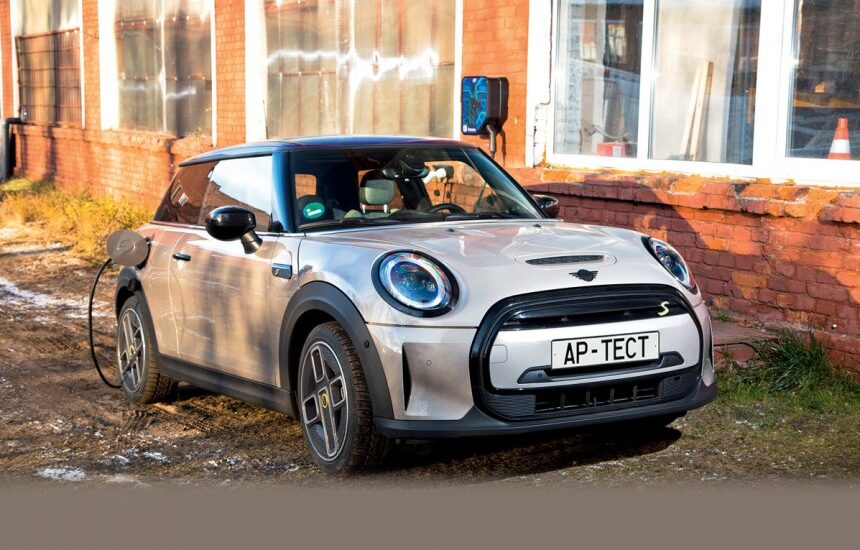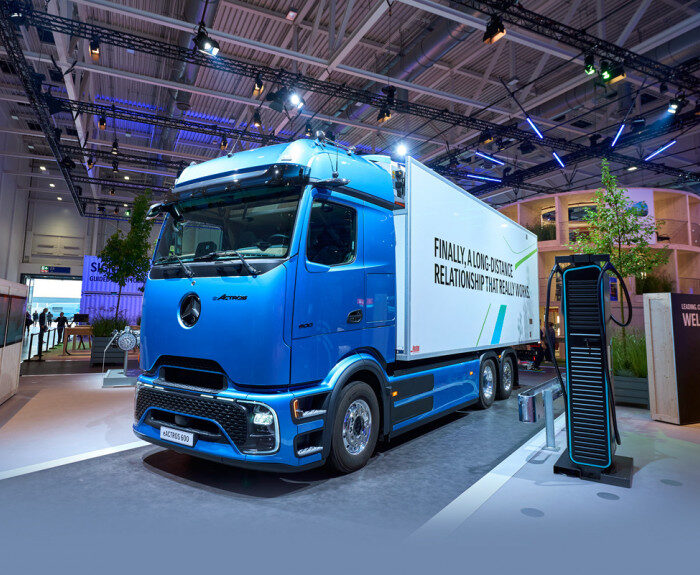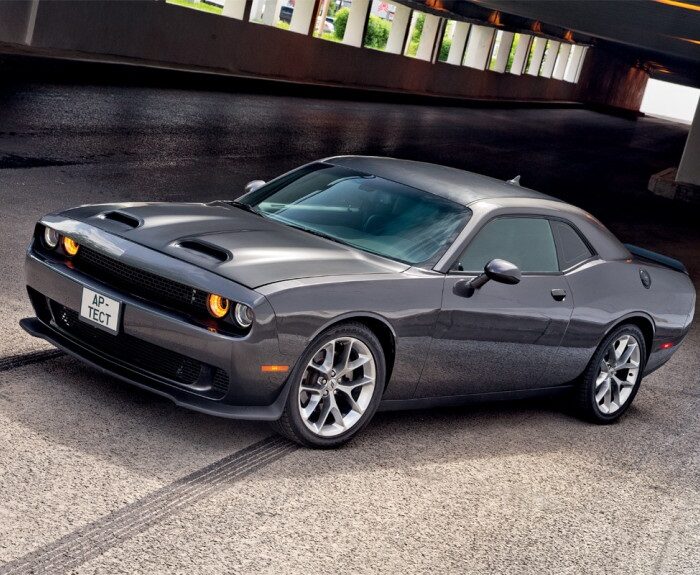The Mini Cooper SE offers a driving range of about 140 kilometers at zero degrees Celsius, increasing at a rate of 7.5 km/h when charging from a standard 220-volt household outlet. Despite this apparent limitation, a significant mitigating factor is that this vehicle is a Mini-Mouse, specifically a three-door model.
My quest for this car began after I announced to my colleagues my readiness to lead the “Electric Dog” section, sharing stories about electric vehicles not yet available in Russia. Inspired by my initial experience with the Peugeot e-208, I visited an Italian BMW and Mini dealer. My plan was to start by borrowing the Mini Cooper SE for a couple of days, followed by the BMW iX, especially since both cars were slated to enter our market by the following spring.
However, my return was less triumphant than anticipated. The “Silicon Crisis” had forced dealers, under pressure from disgruntled customers and in a bid to save their businesses, to sell even their test-drive vehicles. Then, through snippets of company correspondence, I learned that the sought-after electric Mini was available for a two-week loan in Moscow, having been brought in from Germany.
So, I flew out of Italy to seize the opportunity!
Visually, the Mini Cooper SE is distinguished from other models in the F56 body (2013 model year) by its unique wheel rims, aside from other decor changes in its current, post-facelift version.
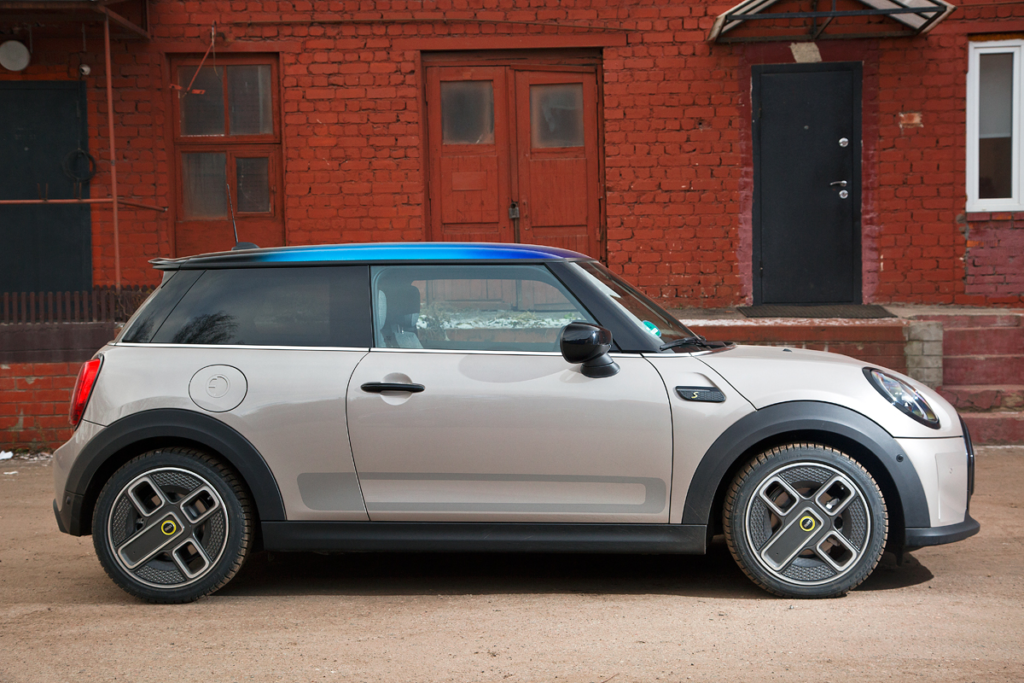
The major revelation while driving was that this was the first “adult” electric vehicle I’ve encountered that completely lacks a creeping mode, even in the deepest user settings where releasing the brake pedal usually moves the car at 7-8 km/h. This concept of “one pedal drive” is taken to the extreme—and it’s implemented brilliantly.
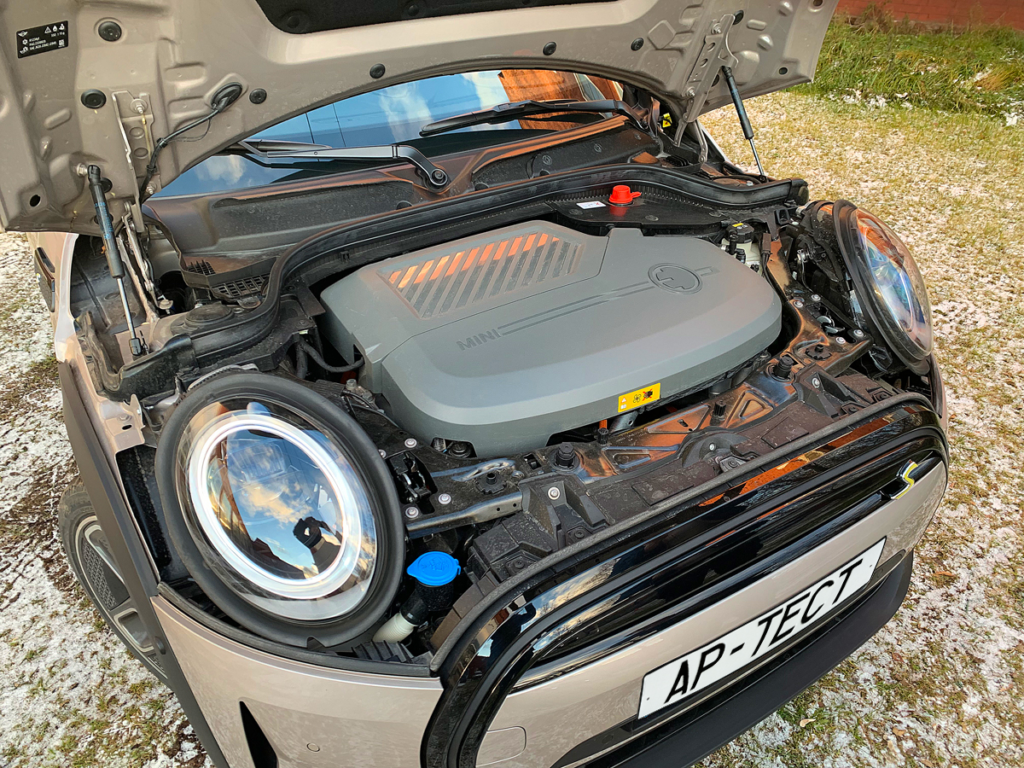
The powerful regenerative braking and subsequent complete stop are so intuitive and predictable that I found myself enjoying traffic jams for the first time. I managed to travel from the southwest to the north of Moscow without once touching the brake pedal! Inspired by the Mini, I even disabled the creeping mode, “Creep,” on my Tesla Model 3. However, I wish I had done that after publishing these lines—then the electric Mini might have had a chance to outperform Tesla. For instance, unlike the Mini, Tesla in Hold mode stops as if a professional driver trained by the FSO is at the helm, easing the brakes at the last moment to avoid any jolt. Secondly, while a stationary Mini commendably doesn’t roll back on a hill, it might roll forward if you lose vigilance; I nearly rear-ended a taxi. Tesla doesn’t roll.
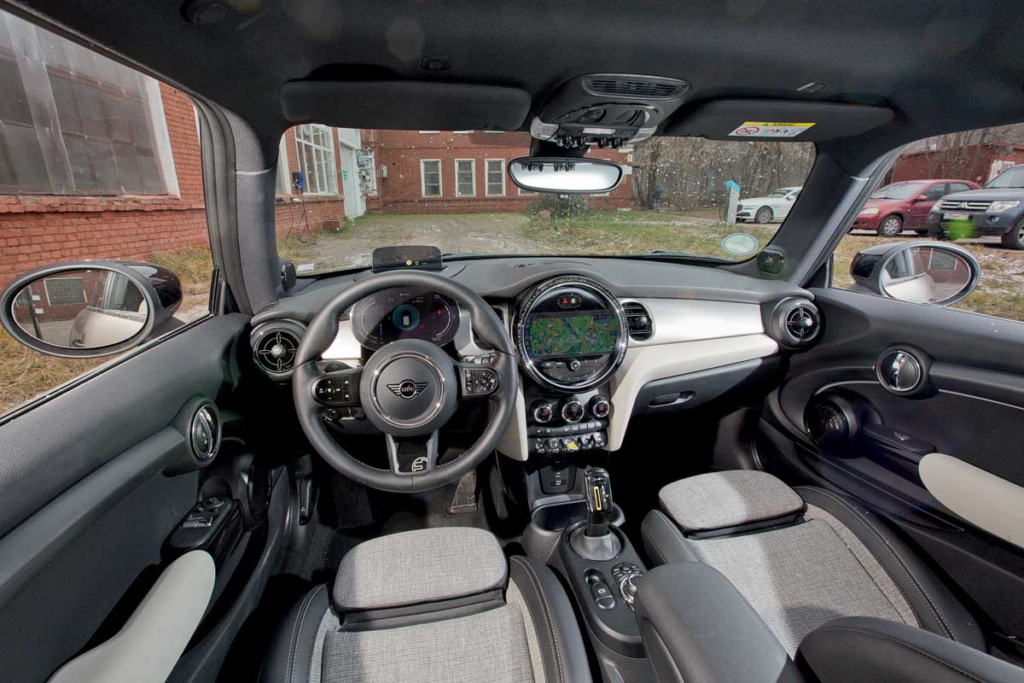
Engaging the Mini’s adaptive cruise control ensures it reliably stops on an incline too, but there’s a catch. It’s easy to get used to the fact that if you’re stopped in traffic for more than three seconds, you have to reactivate the cruise control by pressing the convenient Res button with the thumb of your left hand. This asserts your engagement in the driving process and your conscious desire to proceed. However, I find this to be an excessive precaution—merely keeping hands on the wheel should suffice. I also appreciated that, unlike Tesla, in adaptive cruise mode, the Mini reacts very calmly to drivers in adjacent lanes who encroach on the lane markings. Tesla’s response, which slows down to match the speed of the lane violator, can be annoying and sometimes forces you to manually take over speed control. But the Mini? It doesn’t even flinch! Worse still, with the same indifference bordering on aggression, the Mini reacts to those who have fully moved into your lane right in front of you! Occasionally, the Mini decides that trailing behind a slow-moving vehicle is unacceptable—and it starts to briskly accelerate without any warning. Moreover, the Mini (at least in the version provided) cannot change lanes or even maintain its lane properly.
Ah yes, a driver’s car indeed!
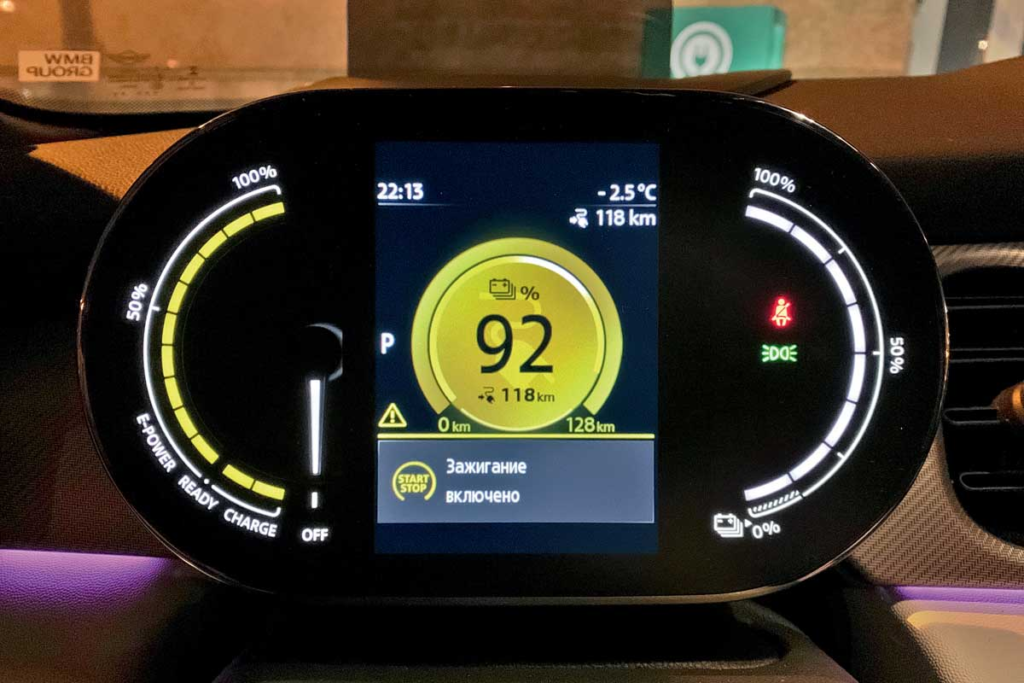
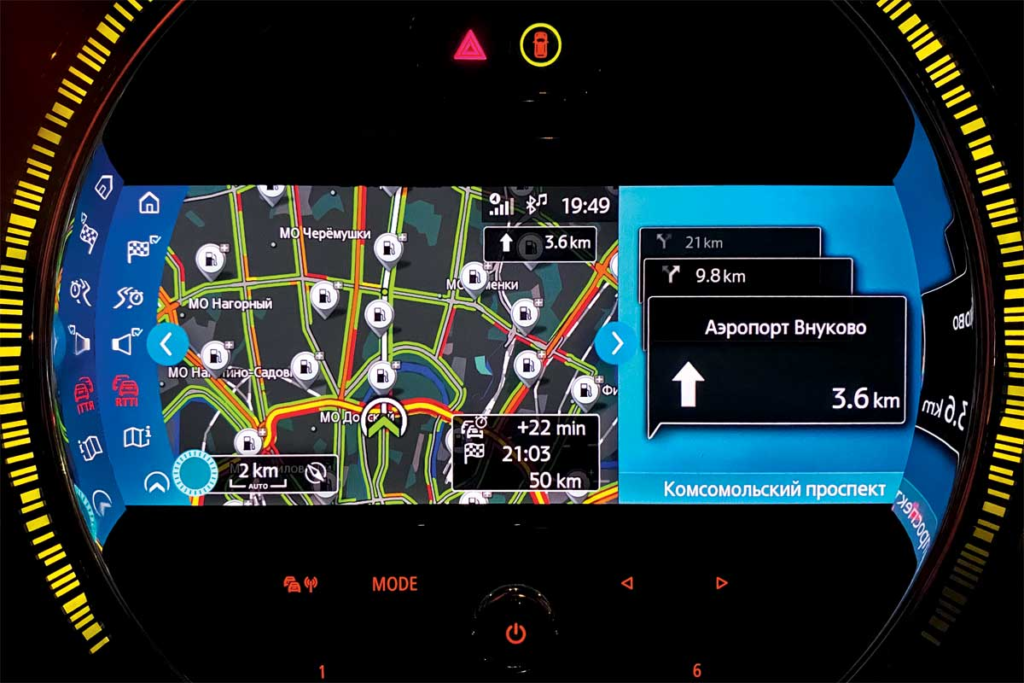
The acceleration dynamics are comparable to a gasoline-powered Mini Cooper S, and to leave no doubts about its readiness to hit 100 km/h in 7.3 seconds, the responses at the start of the pedal stroke are sharply emphasized. I like it.
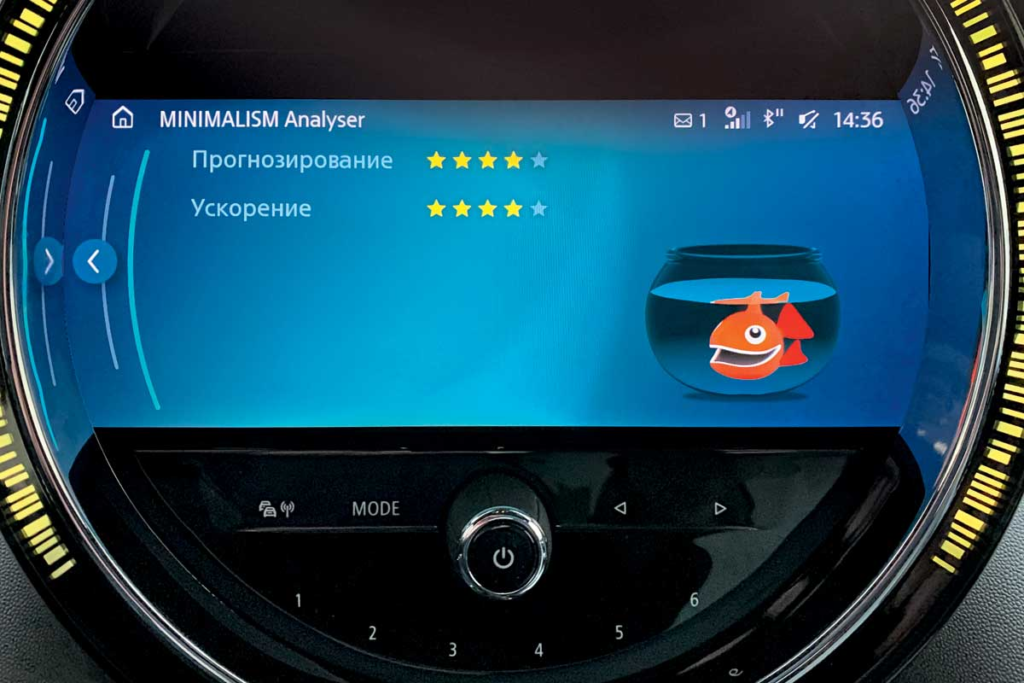
However, the handling—or more precisely, the steering feedback—did not impress. I suspect it’s not just the winter tires, but also that the steering’s electric assist seems to have been recalibrated due to the increased weight of 235 kg. At small angles, the steering becomes dishearteningly light, and the Sport mode is no cure-all. Yet, if you compare it not with a Tesla Model 3 but with the squirrely Peugeot e-208, there’s complete understanding through the steering and especially through the brakes.
I won’t delve into user settings in the style of “green vegetables,” nor will I direct enthusiasts to the operating manual. I’ve looked at it myself, thankfully already available in Russian, and realized that I had been too quick to mock auto bloggers.
A few quotes on the topics discussed:
“Servotronic is a speed-dependent power steering system. At low speeds, steering effort is maintained stronger than at high speeds. This facilitates, for example, parking, and at high speeds, it makes handling more direct.”
That translators/editors are not in the know is the lesser issue. But a hydraulic power steering system! What do you think of that, Elon Musk?
Or the description of Sport mode:
“Operating principle: Sequential sport setting of the drive for greater maneuverability while moving.”
How so? Does the system switch to a different algorithm for active rear-wheel steering? Does it increase the maximum angle of the front wheels? Does it reduce the wheelbase?
And about adaptive cruise control:
“Operating range of the radar sensor. Camera recognition capabilities are limited. Therefore, warnings may be erroneous or delayed.”
Are you talking about the camera or the radar?
What a curious book.
At half-past midnight, I entered the underground garage—with a 36% charge, which the onboard computer estimated would last for another 47 kilometers. I had at my disposal a single-phase 220-volt socket, and since it can maintain a nearly three-ton Tesla Model S with an 85 kWh battery in combat readiness, the Mini with its T-shaped 32.5 kWh battery should greet the dawn fully charged.
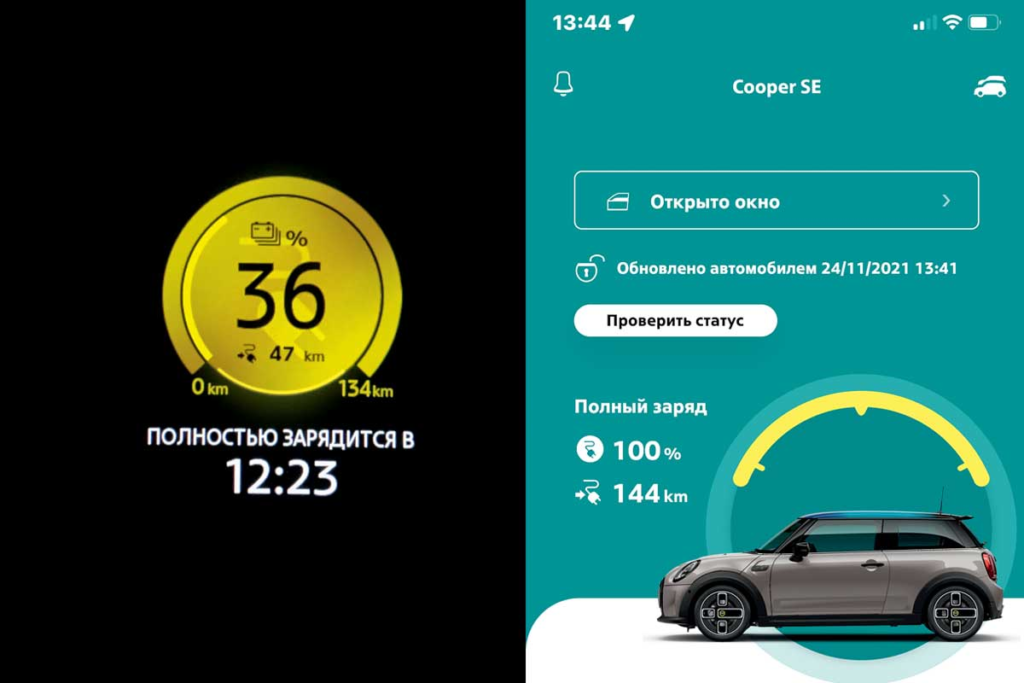
And what a convenient, versatile mobile connector! The cord leading to the socket isn’t soldered into the unit but attached via a connector, allowing you to switch it in seconds for a cable with a plug for a more powerful ‘blue,’ single-phase socket or a ‘red,’ three-phase 380-volt one! Moreover, the charging doesn’t draw from one phase but indeed from all three—at a power of 11 kW! So, there’s no point in splurging on a three-phase wall box. All that’s left is to ensure through the menu that the car is set to charge at maximum speed—and…
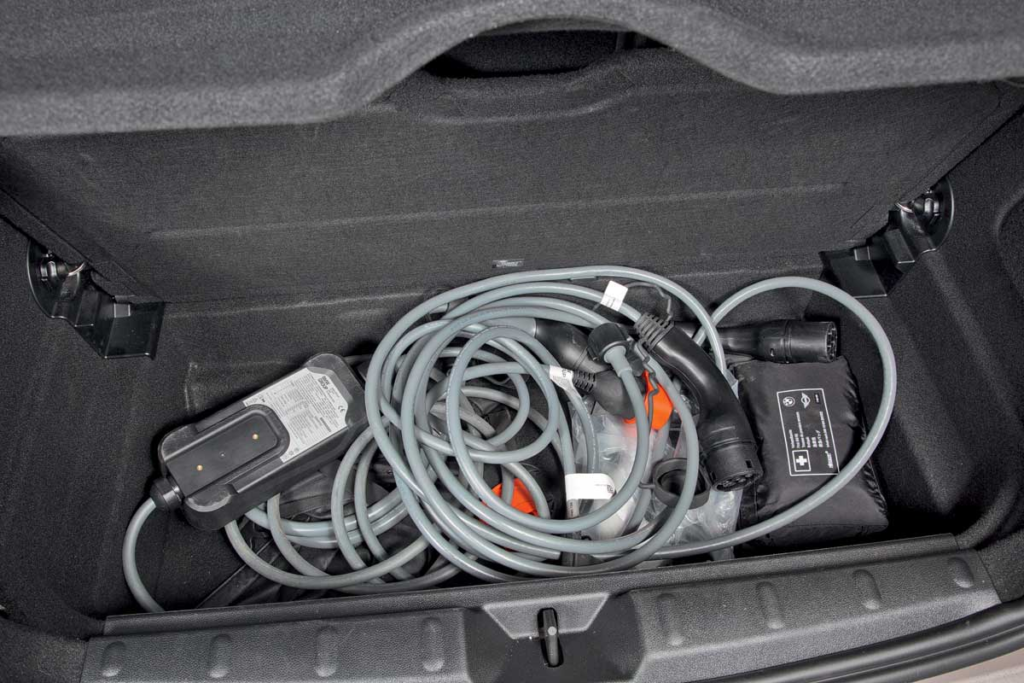
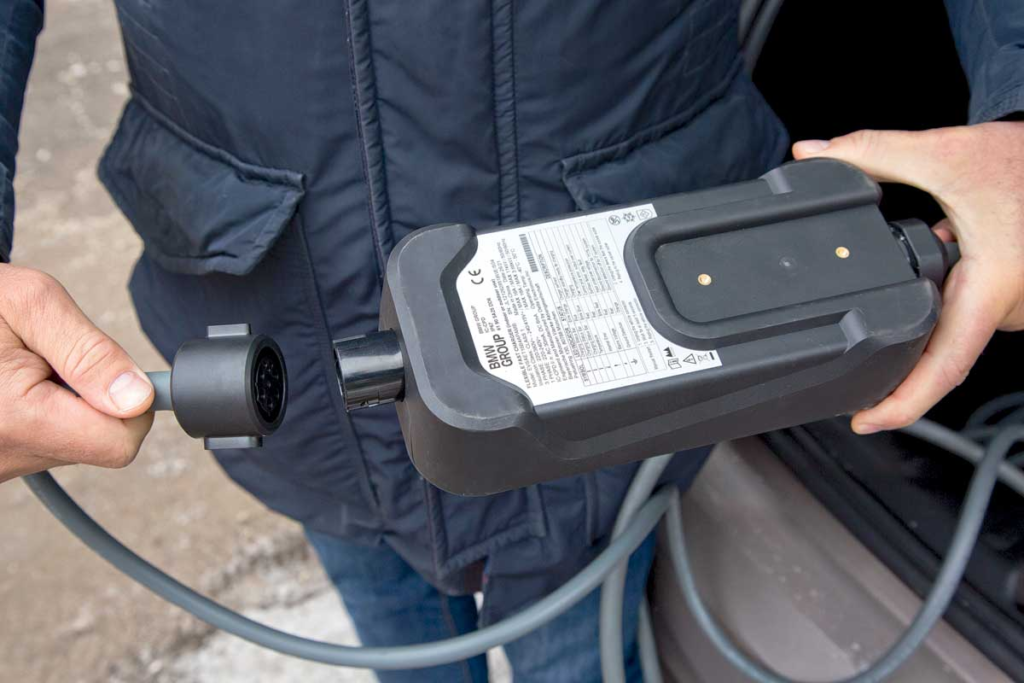
What nonsense? If you believe the image on the matte ‘instrument panel’ (and what else is there to believe, not the manual, surely!), a 100% driving range of 134 km will be achieved… will be achieved… in 12 (twelve!) hours. Even considering the ‘beer mug effect,’ where the last 20% of energy takes as long to fill as the first 80% (not noticeable here), this is daunting.
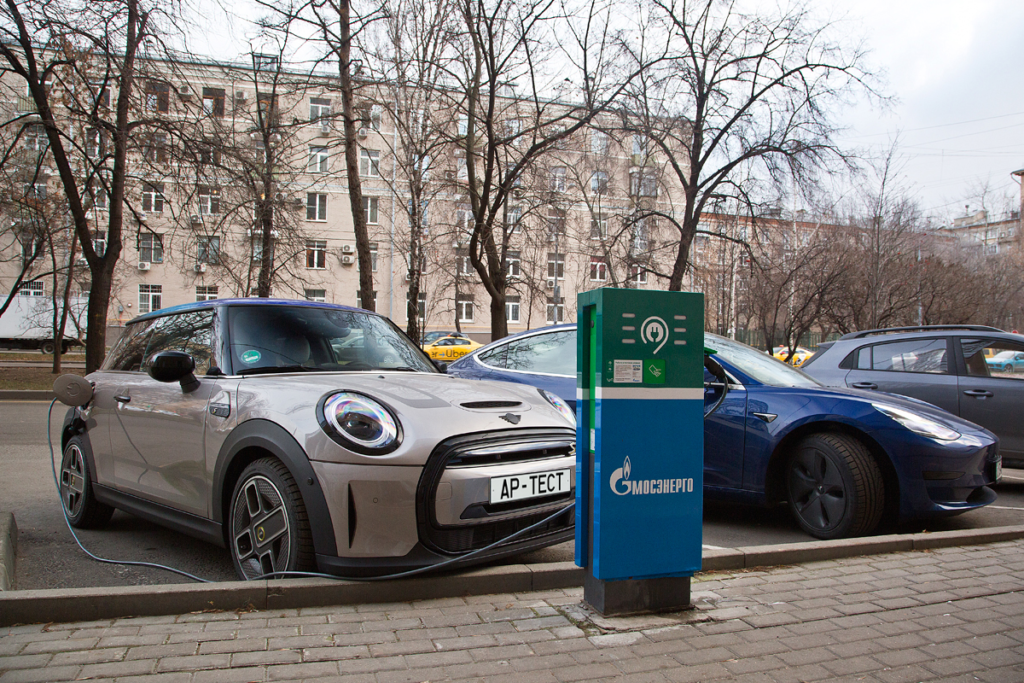
And the final nail—expected prices range from 3.6 to 4 million rubles. Hey! For a bit over four million, you could import a nearly new Tesla Model 3 from Germany—dual-motor, with autopilot, which would leave this little electric mouse, calling itself an electric car, with no ground to stand on.
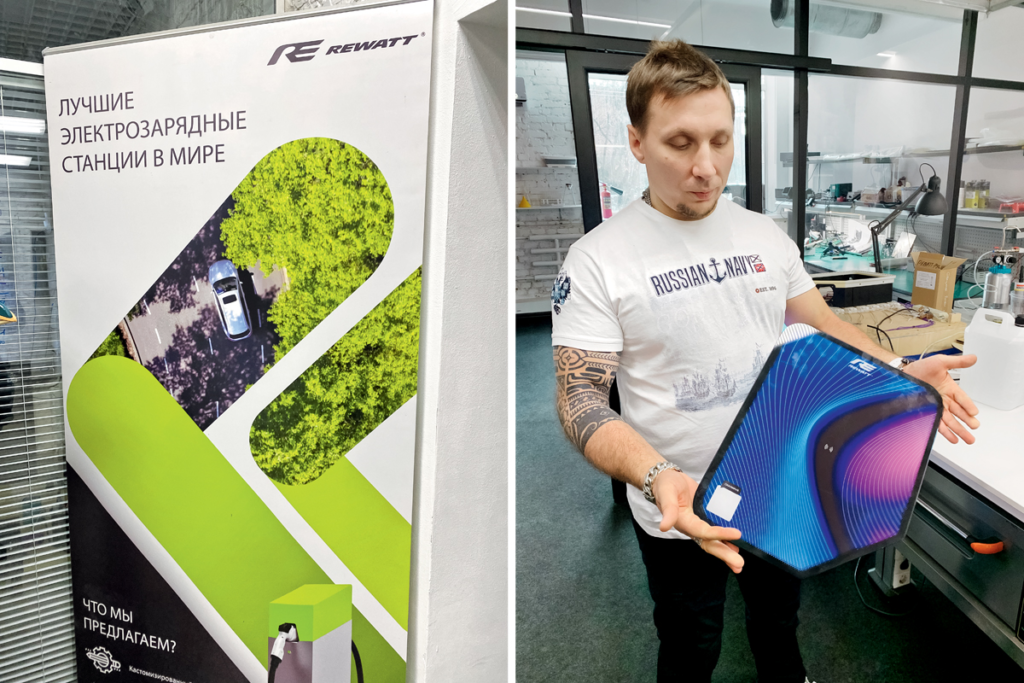
Oh yes, unlike Tesla, the Mini has a heads-up display, standard navigation (on the Here mapping platform, and BMW is one of the co-owners) that works in Russia, and to assist, Apple CarPlay supports a host of applications.
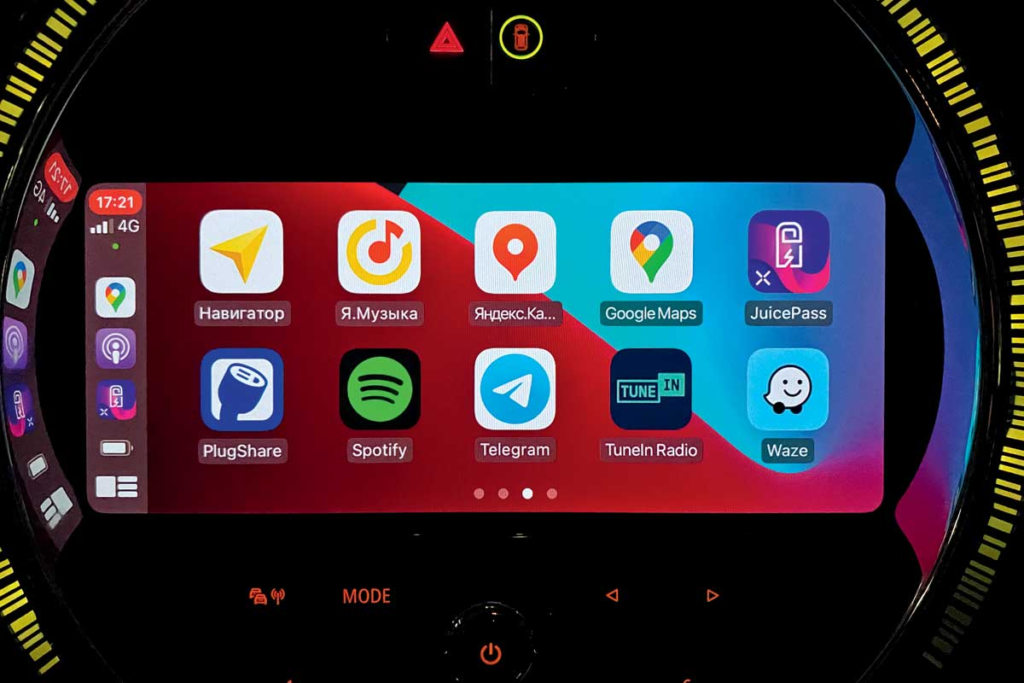
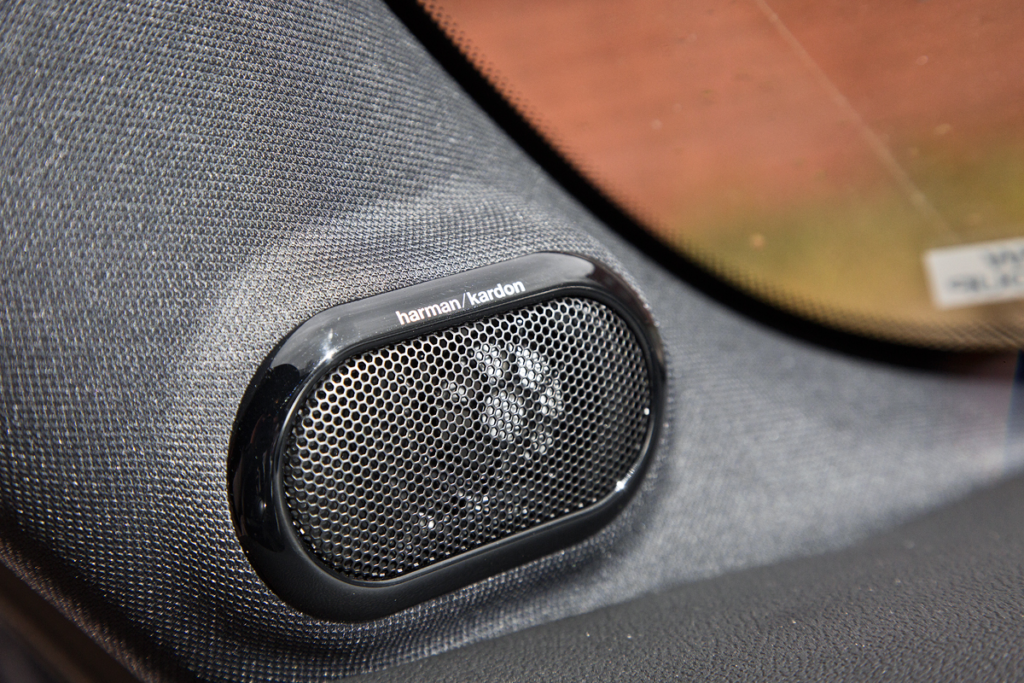
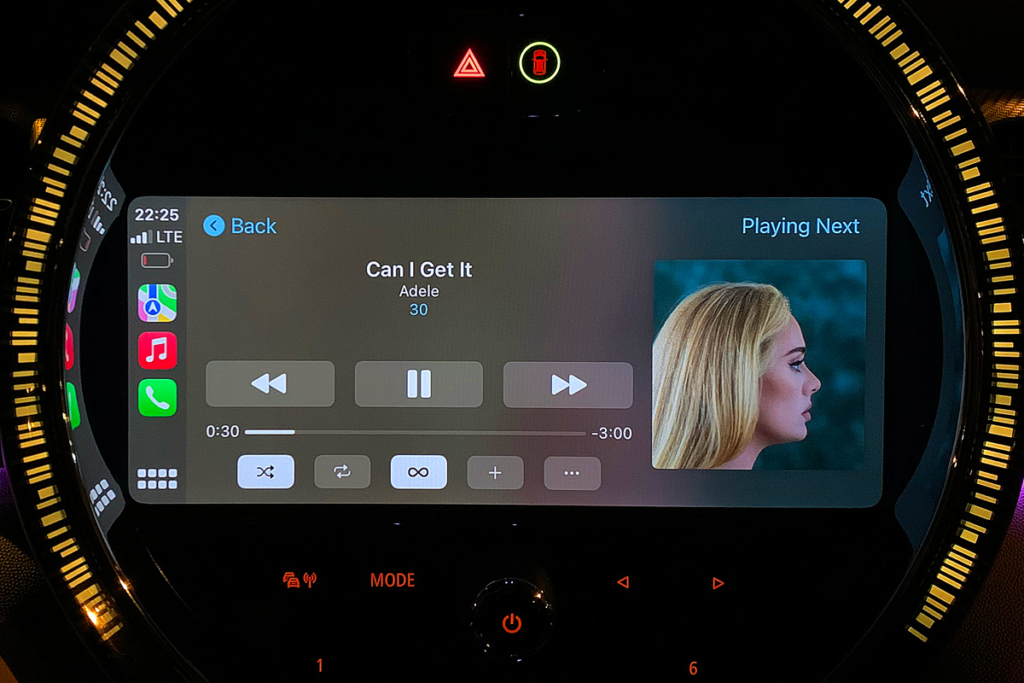
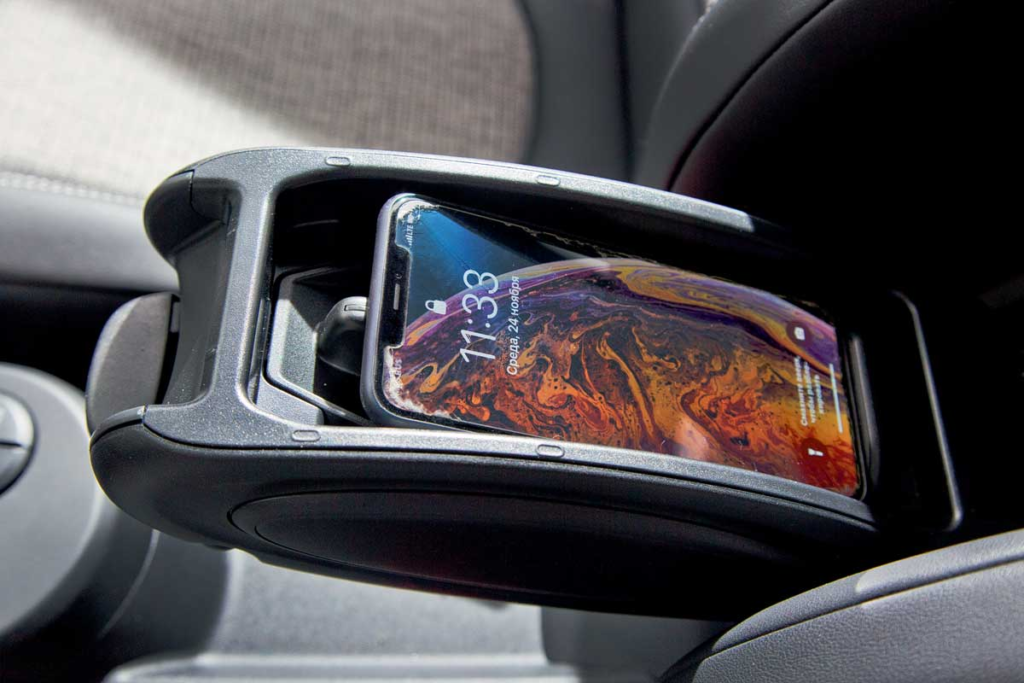
Meanwhile, the Mini Cooper SE has a chance to become iconic! It seems this is the last electric car made by the old guards—to the brink—based on and in the bodies of ICE vehicles. The next Mini, now the fourth generation, is expected to appear in 2023, and it’s likely to be an electric vehicle first, this time with the architecture developed specifically for it, and ICE vehicles as an afterthought.
That’s the electric Mini we’ll wait for.
P.S. I just learned that adaptive cruise control has been excluded from the Russian options list. I assume this commendable practice could be extended to the entire Mini SE line, and it might be best to start with the manual. And the mobile power block and cables can stay; I would buy them.
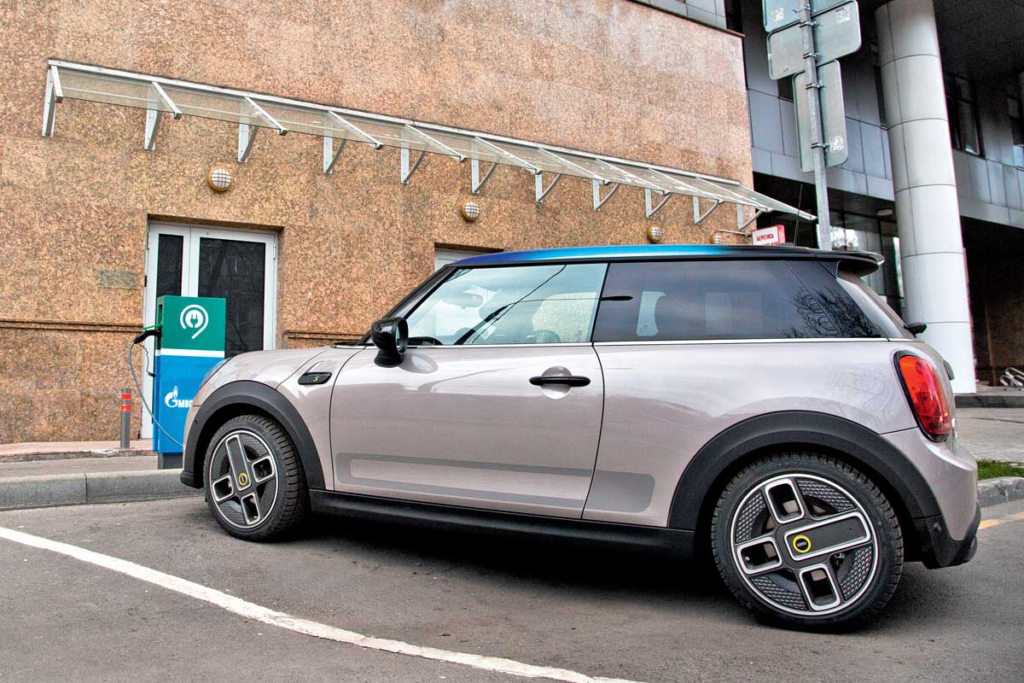
| Feature | Specification |
|---|---|
| Model | Mini Cooper SE |
| Body Type | Three-door hatchback |
| Dimensions (mm) – Length | 3850 |
| Dimensions (mm) – Width | 1727 |
| Dimensions (mm) – Height | 1432 |
| Wheelbase (mm) | 2495 |
| Ground Clearance (mm) | 128 |
| Curb Weight (kg) | 1440 |
| Gross Weight (kg) | 1775 |
| Engine/Motor Position | Transversely, in the front overhang |
| Max Power (hp/kW) | 184/135 |
| Max Torque (Nm) | 270 |
| Traction Battery Type | Lithium-ion |
| Battery Position | T-shaped, under the floor |
| Battery Capacity (kWh) | 32.6 |
| Max Charging Power AC (kW) | 11 |
| Max Charging Power DC (kW) | 50 |
| Drive Type | Front |
| Base Tire Dimensions | 195/55 R16 |
| Max Speed (km/h) | 150* |
| Acceleration 0—100 km/h (s) | 7.3 |
| Max Range (WLTP, km) | 225.3 |
| Energy Consumption (WLTP, kWh/100km) | 15.2 |
*Limited by electronics
Photo: Mikhail Podorozhansky | Nikita Kolobanov
This is a translation. You can read the original article here: Электрический пёс, часть третья: Подорожанский, Mini Cooper SE и адаптивный круиз-контроль

Published January 16, 2025 • 7m to read

